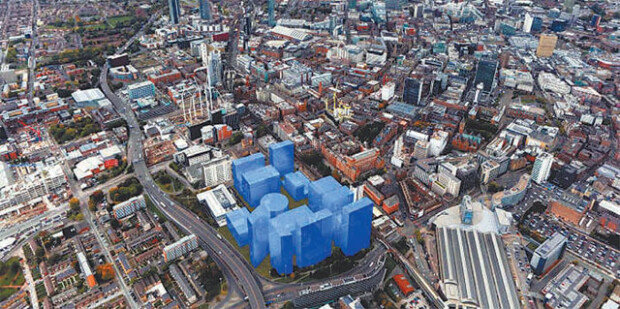Manchester University can raise up the city
Manchester University can raise up the city
Posted June. 26, 2019 08:09,
Updated June. 26, 2019 08:09

Manchester Piccadilly is the main railway station in Manchester, England. The station is always crowded with a plenty of railway travelers as many industrial cities are located around Manchester such as Sheffield, Birmingham and Leeds. Coming out of the station, you can see an old building on London Road that would be used as a fire station, police station and emergency medical center. Walking down to the south leads you to the North Campus of Manchester University, which accommodates library, dormitory, lecture rooms and research laboratories. It is also home to Sackville Street Building of French Renaissance style completed in 1902.
Manchester University has carried out a large-scale development project named “ID Manchester” to build a complex of research, commercial and residential facilities on the north campus as large as 105,218 square meters. With the goal of finishing the project in 10 years, the university has invested 1.5 billion pound (approx. 2.20 trillion won) in the project and projected that around 6,000 jobs will be created in the region. The university draws a co-investor to form a joint venture and leases the property to a particular corporate for 250 years.
The Manchester municipality has also aided the project team. It came as a big surprise to the university that many global pension fund organizations and sovereign wealth funds of large-scale showed a great interest in ID Manchester at the world’s largest real estate fair MIPIM held in March, in Cannes, France.
Most British universities receive financial grants from the central and municipal governments. They would not find their communities interesting. But lower funding from government urged collesges to find alternative ways. Thanks to sufficient hydraulic power, Manchester flourished in cotton spinning and weaving in the 19th century so much so that it was nicknamed Cottonopolis. The fall of the cotton industry, however, led to population shrinking and economic recession after the 1920s. In the present day, the city is more famous for its football team Manchester United F.C. than as an industrial city.
Manchester University has realized that the education industry also creates jobs and wealth. In that sense, it has been attracting investors to build facilities for students and companies on unused land so that it can carry out research for entrepreneurship. The school has abundant experience of working on development projects with leading businesses such as Rolls-Royce, Siemen, Colgate, Unilever and GlaxoSmithKline. Telecoms firm TalkTalk considers moving its headquarters from London to Manchester where it already opens an office. The company will leave 20 to 30 business units in London and brings more than 500 business units to Manchester in expectation of cost saving and a synergy effect.
It is not new that universities, local governments and businesses join their forces to revive cities. Stanford Professor Henry Etzkowitz showed a case of MIT in Boston back in the 1990s, devising “triple helix model of innovation.” A tripartite group of universities, businesses and municipalities interact to drive economic growth, according to this theory. MIT School of Management located in Kendall Square, Boston also served as a driving force. The area used to be an industrial zone with breweries, power plants and soap factories. It later turned into the center of university buildings, research centers, commercial facilities and residential areas with vitality added to the city center.
An inflow of people, wealth and authority naturally leads to economic growth. The old city center loses steam with their population on the decline, which universities can trigger development. Manchester University worked on a development project to overhaul the area with historical building intact by taking advantage of its campus site. The school is also aggressive in attracting private-sector investors. since the mid-2000s, the population in Manchester has been rebounding amid such development efforts and regeneration of surrounding city centers. With the initiation of “ID Manchester,” it is expected that the population of the city center will grow by a third. The fall of conventional industries leads to reductions in population, ending up with economic difficulties. That is why there are a growing number of local universities on the verge of existential crisis. It is proposed to carry out a joint project in which universities, municipalities and businesses use idle land and attract investment in the era of the demise of local communities. Tripartite cooperation can triple the effects.
Yu-Jong Lee pen@donga.com







